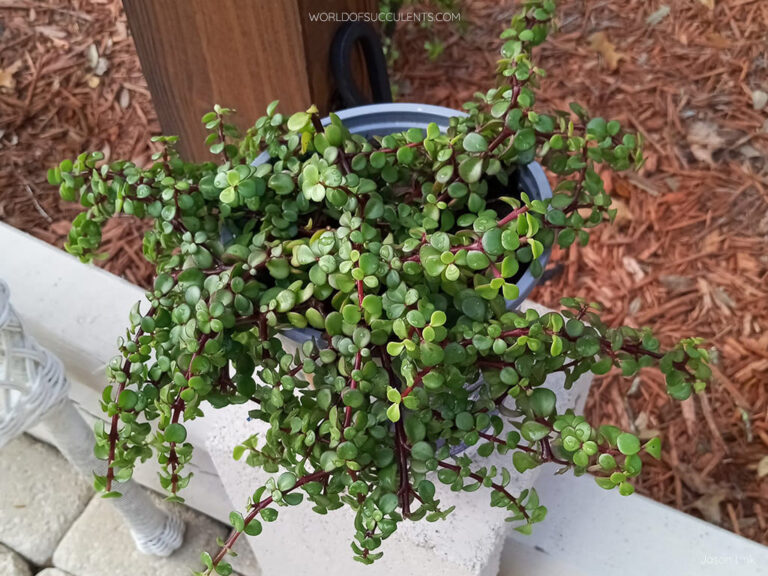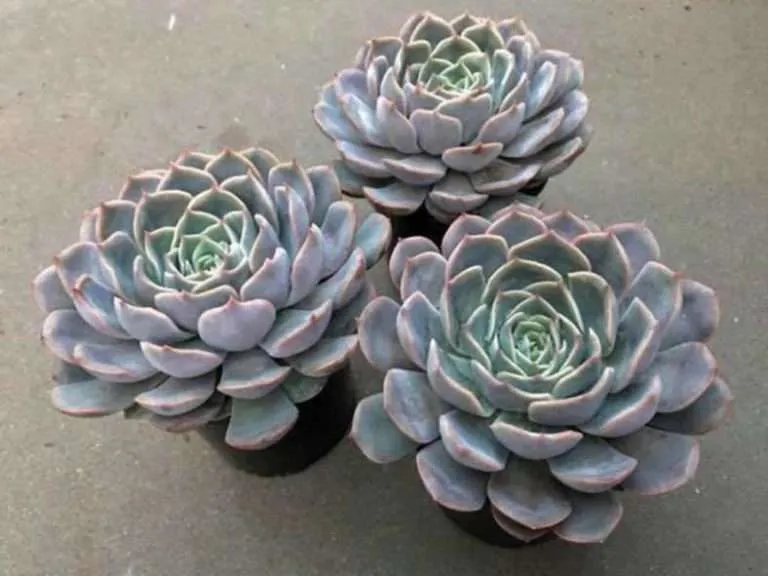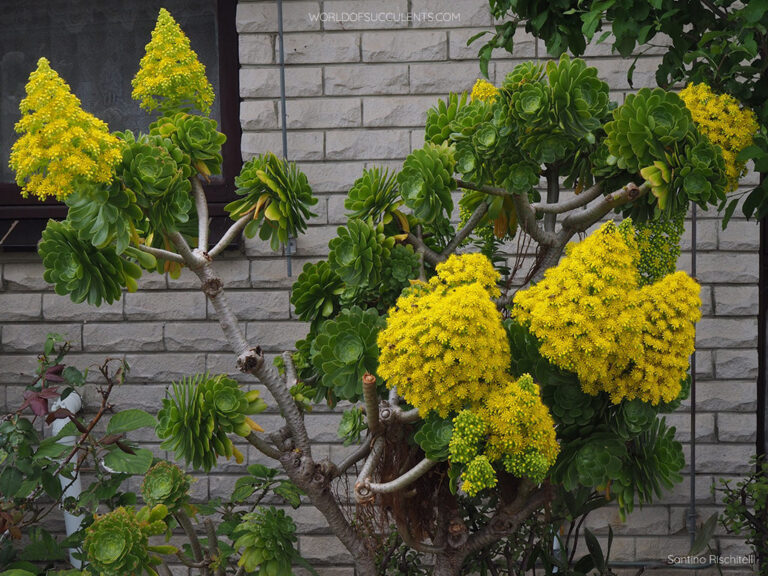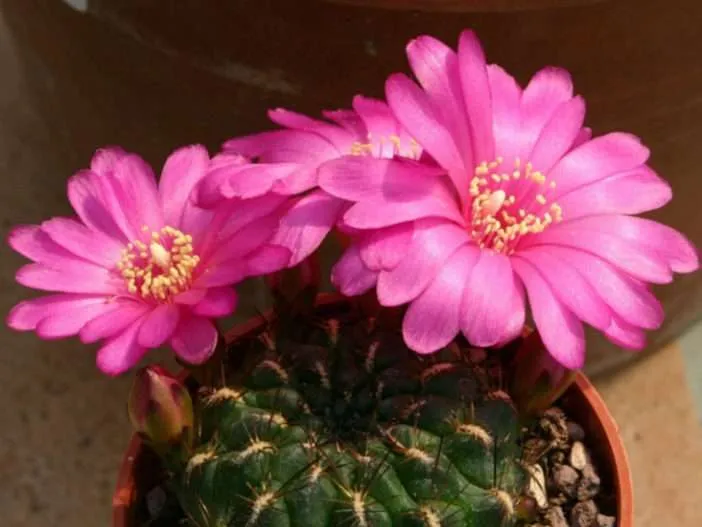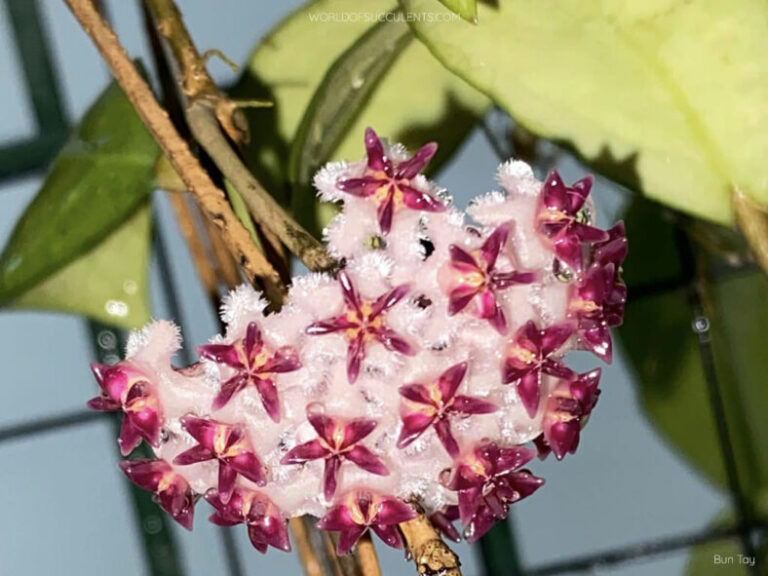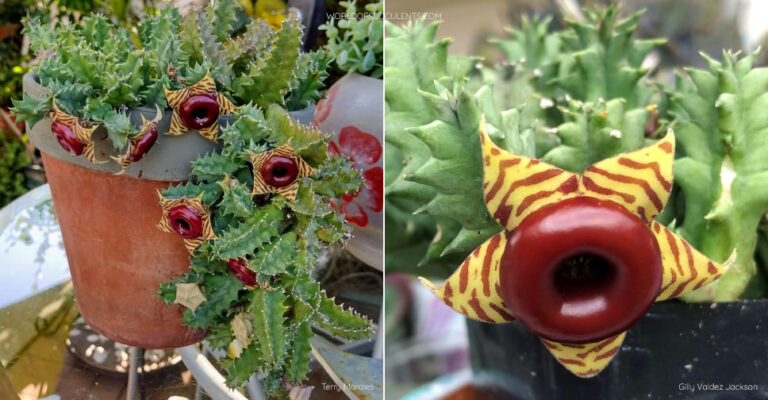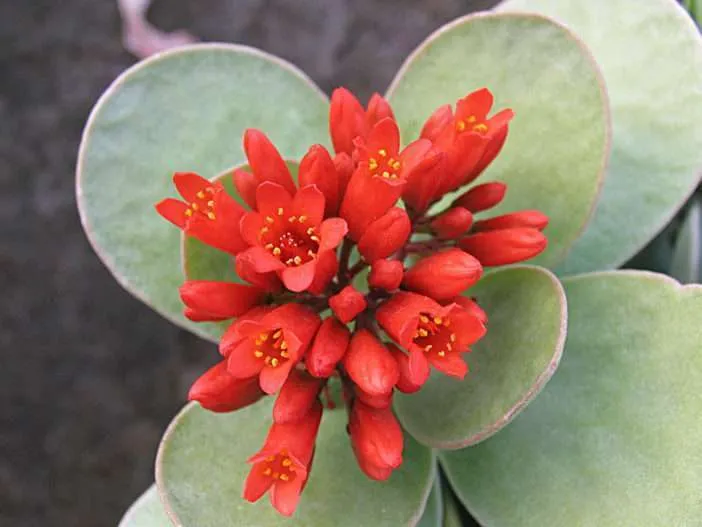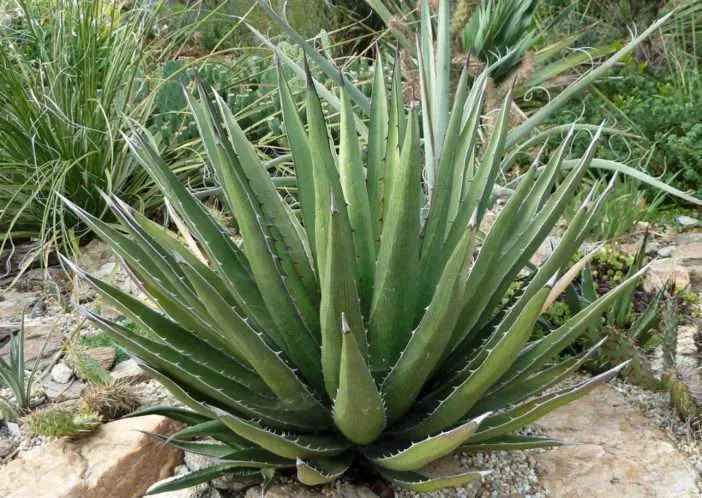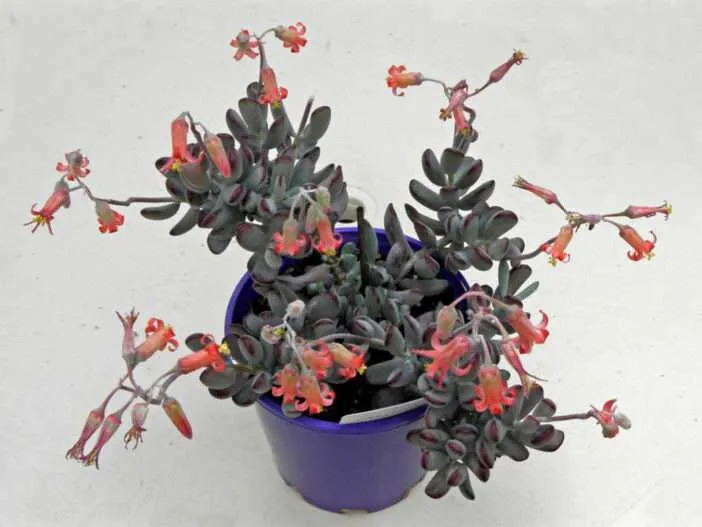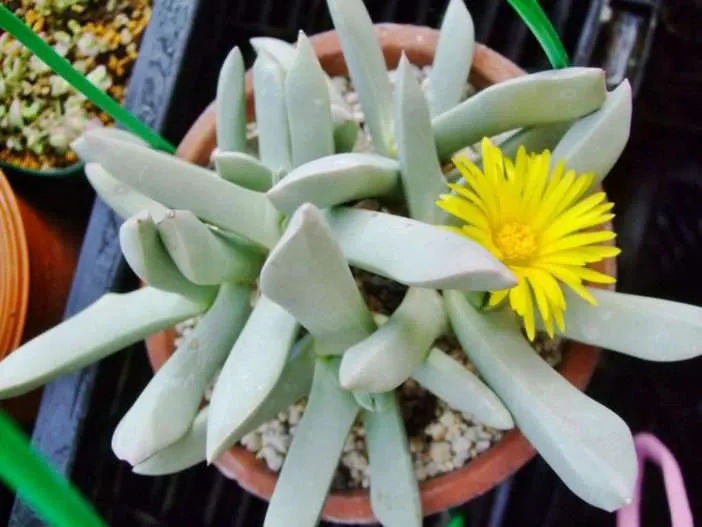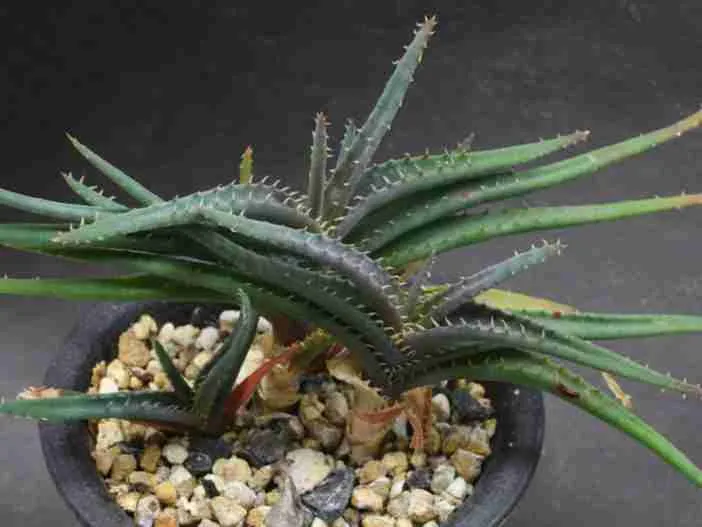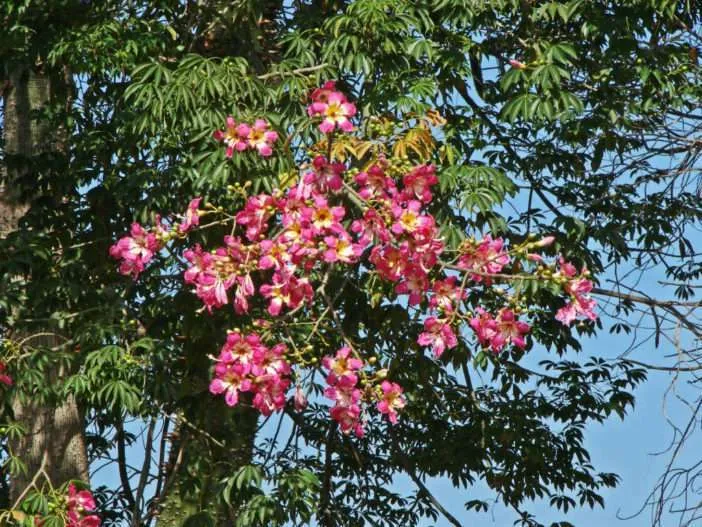Traducir al español y haga que sea mas fácil de entender. Mantenga la estructura. Mantenga etiquetas HTML
Kalanchoe synsepala ‘Dissecta’ shares the characteristic habit of the typical form but is distinguished by its leaves.
Scientific Name
Kalanchoe synsepala ‘Dissecta’
Accepted Scientific Name
Kalanchoe synsepala Baker
Common Name(s)
Cup Kalanchoe, Walking Kalanchoe
Synonym(s)
Kalanchoe synsepala var. dissecta, Kalanchoe synsepala f. dissecta
Scientific Classification
Family: Crassulaceae
Subfamily: Sedoideae
Tribe: Kalanchoeae
Genus: Kalanchoe
Description
Kalanchoe synsepala ‘Dissecta’ is a stoloniferous succulent with woody stems that bear fleshy, pinnatifid leaves. The stems are erect or decumbent, unbranched, usually short, but sometimes can grow up to 16 inches (40 cm) long. The leaves can reach up to 6 inches (15 cm) in length and are dissected into narrowly lance-shaped, sometimes pinnately toothed divisions. They are green with red margins and blush reddish in bright sunlight. The stolons emerge from leaf axils and arch down under the weight of a plantlet that develops at the tip and takes root when it touches the soil.
In late fall and early winter, the plant produces flowers in dense clusters at the tips of peduncles, similar to the stolons. The flowers are white to pinkish or purplish.
Origin
Kalanchoe synsepala ‘Dissecta’ is a form of the variable Kalanchoe synsepala selected for its dissected leaves. The species is native to Madagascar.

How to Grow and Care for Kalanchoe synsepala ‘Dissecta’
Light: Kalanchoe synsepala ‘Dissecta’ grows best in full sun but usually appreciates some partial shade during the hot summer days. When growing indoors, place it near a window with indirect sunlight. If it does not receive enough light, it may stretch.
Soil: The plant needs soil that drains well and does not like «wet feet.» A commercial potting mix for succulents will work well.
Temperature: Kalanchoe synsepala ‘Dissecta’ thrives in heat and humidity but cannot handle frosts. It grows best in USDA Plant Hardiness Zones 10a to 11b, with average minimum winter temperatures ranging from 30 to 50 °F (-1.1 to 10 °C).
Watering: From spring to fall, water the plant thoroughly, but let the soil dry between watering as overwatering may cause stem rot. Reduce water during winter and only water it enough to prevent the leaves from shriveling.
Fertilizing: Fertilize occasionally during the growing season with a balanced fertilizer diluted to half or quarter strength applied every two weeks.
Repotting: The plant thrives better when frequently repotted. For optimum growth, repot it every two years in spring. Go up one pot size every time you repot.
Propagation: Kalanchoe synsepala ‘Dissecta’ can be easily propagated by plantlets that develop at the tip of the stolons. Spring is the best time to separate plantlets.
Learn more at How to Grow and Care for Kalanchoe.
Toxicity of Kalanchoe synsepala ‘Dissecta’
Kalanchoe synsepala ‘Dissecta’ is not toxic to people but should be kept away from pets because it may cause vomiting, diarrhea, and heart arrhythmias if consumed.
Links
- Back to genus Kalanchoe
- Succupedia: Browse succulents by Scientific Name, Common Name, Genus, Family, USDA Hardiness Zone, Origin, or cacti by Genus
Photo Gallery
Click on a photo to see a larger version.




